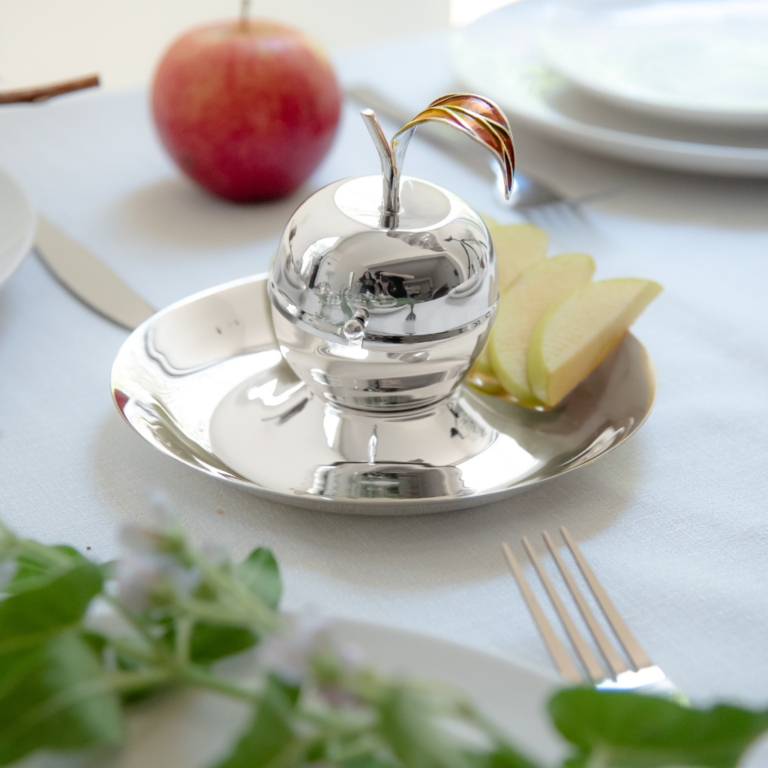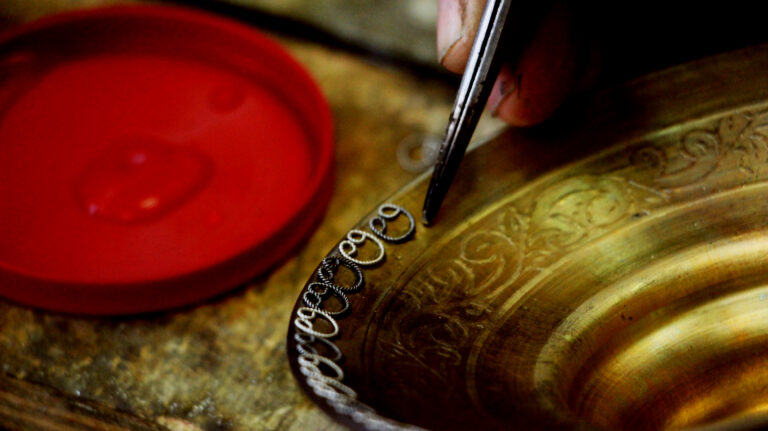 Hanukiah, also known as a Hanukkah menorah, holds deep significance in Jewish culture and tradition.
Hanukiah, also known as a Hanukkah menorah, holds deep significance in Jewish culture and tradition.
This iconic symbol represents the celebration of Hanukkah, the Festival of Lights.
Join us as we explore the traditions, the lighting ceremony, and the profound importance this cherished holiday symbol holds in the hearts of millions of Jewish people worldwide.
To listen to the entire article, please click on the play button.
What is a Hanukiah?
The Hanukiah is a nine-branched candelabrum used during the Jewish holiday of Hanukkah. It is often called a Hanukkah menorah, although it differs from the seven-branched Menorah used in the ancient Jewish Temple.
The Hanukiah holds a central role in celebrating Hanukkah, symbolizing the miracle of the oil that burned for eight days in the Temple menorah. It serves as a beacon of light and hope, reminding Jewish families of the triumph of their ancestors.
The Symbolic Design of the Hanukiah
The Hanukiah consists of eight branches, symbolizing the eight nights of Hanukkah. Depending on the design, these branches are evenly spread out and aligned in a straight line or arranged in an arc. The ninth branch, known as the shamash, stands higher or apart from the others and is used to light the other candles.
The Historical Significance of the Hanukiah
The Hanukiah carries a profound historical significance, harkening back to the time of the Maccabees and their struggle for religious freedom. It serves as a reminder of the dedication and resilience of the Jewish people in the face of oppression.
By kindling the Hanukiah each night of Hanukkah, Jewish individuals, and families honor their heritage and commemorate the events that unfolded centuries ago.
The Celebration of Hanukkah
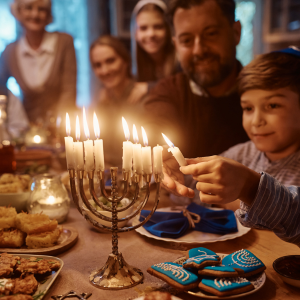 Hanukkah is an eight-day celebration observed by Jewish communities worldwide. Hanukkah (festival of lights) commemorates the rededication of the Second Temple in the holy city of Jerusalem and the oil miracle.
Hanukkah is an eight-day celebration observed by Jewish communities worldwide. Hanukkah (festival of lights) commemorates the rededication of the Second Temple in the holy city of Jerusalem and the oil miracle.
During Hanukkah, families come together to light the Hanukiah, exchange gifts, play traditional games such as dreidels, and indulge in delicious foods. It is a joyous time filled with love, laughter, and the warmth of shared traditions.
Related: Best Hanukkah Games For Your Children
The Story of Hanukkah
The story of Hanukkah dates back to the second century BCE when the land of Israel was under the rule of the Seleucid Empire.
The tyrannical ruler Antiochus IV outlawed Judaism and desecrated the Holy Temple in Jerusalem.
A small group of Jewish rebels, known as the Maccabees, rose against the oppression, eventually reclaiming the Temple. The story of Hanukkah celebrates their victory and the rededication of the Temple.
Want to enrich your knowledge about the story of Hanukkah More? Watch this video!
The Miracle of the Oil
 Upon reclaiming the Temple, the Maccabees sought to light the Menorah, but they found only a single flask of uncontaminated oil, enough for 1-day.
Upon reclaiming the Temple, the Maccabees sought to light the Menorah, but they found only a single flask of uncontaminated oil, enough for 1-day.
Miraculously, the oil burned for 8 days, allowing enough time to prepare a new supply. This divine miracle is commemorated during Hanukkah by kindling the Hanukiah and adding one additional candle each night until all candles are lit.
Lighting the Hanukiah
The ritual of lighting the Hanukiah is one of the central observances during Hanukkah. Each night, after sundown, families gather together to light the candles.
The shamash, the central candle, is used to ignite the other candles in a specific order—adding one candle each night.
The lit Hanukiah is then placed in a prominent position, often in a window, to publicize the miracle.
The Ritual of Lighting
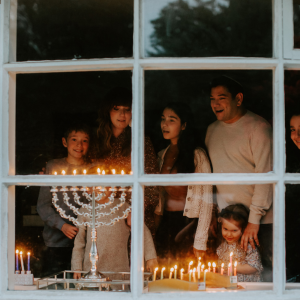 As the candles are lit, traditional blessings are recited. The first blessing is known as the “l’hadlik ner shel Hanukkah,” which means “to kindle the lights of Hanukkah.”
As the candles are lit, traditional blessings are recited. The first blessing is known as the “l’hadlik ner shel Hanukkah,” which means “to kindle the lights of Hanukkah.”
The second blessing is the “Shehecheyanu,” expressing gratitude for reaching this joyous occasion.
The Hanukiah is left to burn for approximately 30 minutes after the blessings, symbolizing the miracle and spreading its radiance throughout the home.
The Hanukiah: A Beacon of Hope
The Hanukiah is a symbol of hope and perseverance. It represents the Jewish people’s victory over oppression and their faith in God. Lighting the Hanukiah each night reminds us of the strength and resilience of the Jewish people.
Hanukiah Decorations and Styles
Hanukiah designs vary, ranging from traditional to modern Chanukiah.
They are crafted using various materials, each with its unique beauty and significance.
Let’s explore some of the materials used and the diverse styles that have emerged over the years.

Traditional Materials Used
Traditionally, Hanukiahs were made from materials readily available during ancient times.
These included brass, silver, or other precious metals, often intricately adorned with engravings or filigree work. Some designs also incorporated gemstones or elaborate decorative elements.
Check out our silver Hanukiahs:
- Menorah with Crown Decoration Element in Sterling Silver
- Menorah in Sterling Silver with Hammered Finish and Dreidel
- Colorful Contemporary Hanukkah Menorah with Enamel
- Musical Harp-Shaped Hanukkah Menorah in a Fashionable Design
Modern and Contemporary Designs
With time, chanukiah designs have evolved, embracing contemporary styles and materials.
Today, you can find Hanukiahs made from various metals, ceramics, glass, or even sustainable materials like wood and recycled materials.
Modern designs often incorporate sleek lines, vibrant colors, and innovative shapes, reflecting the creativity of artists and artisans.
Personalized Hanukkah Menorahs
Personalized Hanukkah Menorahs are a unique way to commemorate the holiday and share its meaning with loved ones. Many companies offer custom-made designs with family names, dates, or other meaningful symbols. These unique menorahs will make the perfect addition to any home during this joyous celebration of light.
Hanukiah: A Family Heirloom
In many Jewish families, the Hanukiah holds a special place as a cherished family heirloom. Passed down from generation to generation, these Hanukiahs carry the weight of history and the love of family connections.
Lighting the Hanukiah that has witnessed countless Hanukkah celebrations brings a sense of continuity and strengthens the bonds between generations.
The Significance of the Eight Candles
Each of the eight candles on the kosher Chanukiah represents one night of Hanukkah. As the holiday progresses, additional candles are lit, creating a luminous display. The progression from one candle to eight symbolizes the growing miracle and serves as a reminder of the triumph of light over darkness.
The Shamash Candle
 The central candle of the Hanukiah, known as the shamash, holds a unique role in the lighting ceremony.
The central candle of the Hanukiah, known as the shamash, holds a unique role in the lighting ceremony.
It is used to ignite the other candles, bringing their radiance to life.
The shamash candle is often elevated or set apart from the rest, emphasizing its importance in fulfilling the mitzvah (commandment) of lighting the Hanukiah.
Hanukiah in the Modern World
In the modern world, the Hanukiah continues to serve as a powerful symbol of Jewish identity and the celebration of Hanukkah. It has become a recognizable icon, inspiring artists, designers, and individuals from diverse backgrounds to embrace and appreciate Jewish culture and traditions.
Understanding the Differences
There is quite a bit of confusion among people of different faiths and backgrounds regarding Hanukiah. Let’s sort it out:
What is the Difference Between a Hanukiah and a Menorah?
The Hanukiah and the Menorah are both candelabras with seven branches, but there is an essential difference between them. The Hanukiah holds eight candles: one for each night of Hanukkah plus one candle to ignite the others (the shamash candle).
The Menorah is traditionally used in synagogues or during special ceremonies and has only seven candles. Each is lit for a specific purpose. Because the Hanukiah holds eight candles and signifies the miracle associated with Hanukkah, it is most often used during the celebration of the festival.
What is the Difference Between a Hanukkah Menorah and a Menorah?
While the Hanukiah and Menorah are both candelabras with seven branches, there is an essential distinction between them.
The Hanukiah holds eight candles – one for each night of Hanukkah plus a separate shamash candle to light the other candles – while a menorah is traditionally used in synagogues or during special religious ceremonies and only has seven candles.
The Hanukiah is typically used to celebrate the miracle of Hanukkah, while the Menorah is used for specific religious purposes.
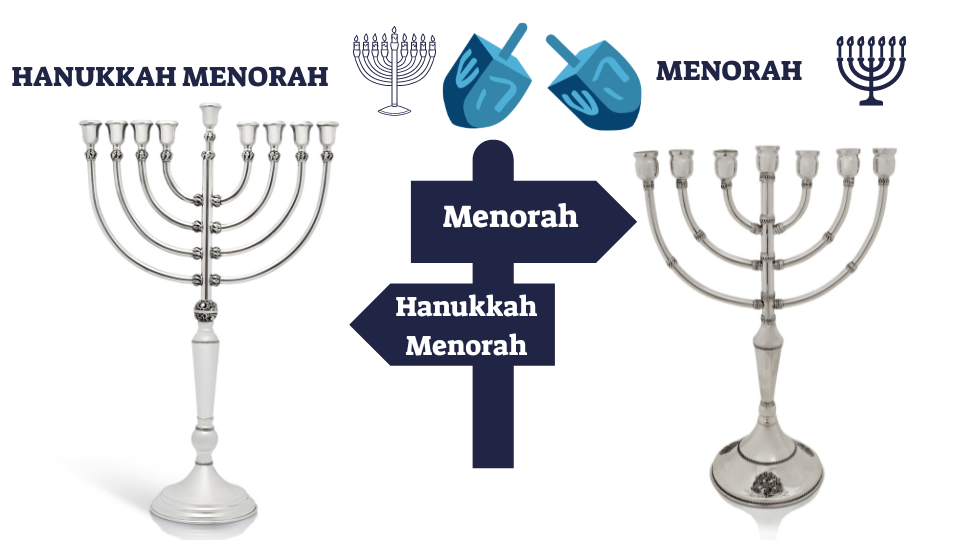
What is the difference between a 7 and 9 candle menorah?
A 7-candle menorah is traditionally used in Jewish ceremonies, such as the lighting of the Chanukah and Shabbat candles.
The 9-candle Menorah is specifically for the celebration of Hanukkah, which consists of 8 candles plus a shamash, or helper candle, used to light the other 8 candles.
The shamash is placed above or below the other 8 candles and usually stands apart from them, signifying its unique role in the lighting ceremony.
Can I use any type of candle for the Hanukiah?
Traditionally, candles made from beeswax or olive oil were used for the Hanukiah.
However, many contemporary Hanukiahs accommodate different types of candles, including those made from paraffin or soy.
Can I leave the Hanukiah candles burning unattended?
It is generally advised not to leave burning candles unattended. To ensure safety, it is recommended to extinguish the candles before leaving the room or going to bed. Electric Hanukiahs are also available as a safer alternative.
How long should the Hanukiah candles burn each night?
The candles should burn for at least 30 minutes after the blessings are recited. However, families often keep them lit longer, creating a warm and festive ambiance during the Hanukkah celebration.
Conclusion
Hanukiah is a shining symbol of Jewish heritage and the triumph of light over darkness. Its unique design and rich history illuminate the celebration of Hanukkah, fostering a sense of togetherness and reminding us of the importance of faith, resilience, and hope.
As we kindle the Hanukiah each year, its warm glow touches our hearts and reaffirms the enduring spirit of the Jewish people.

